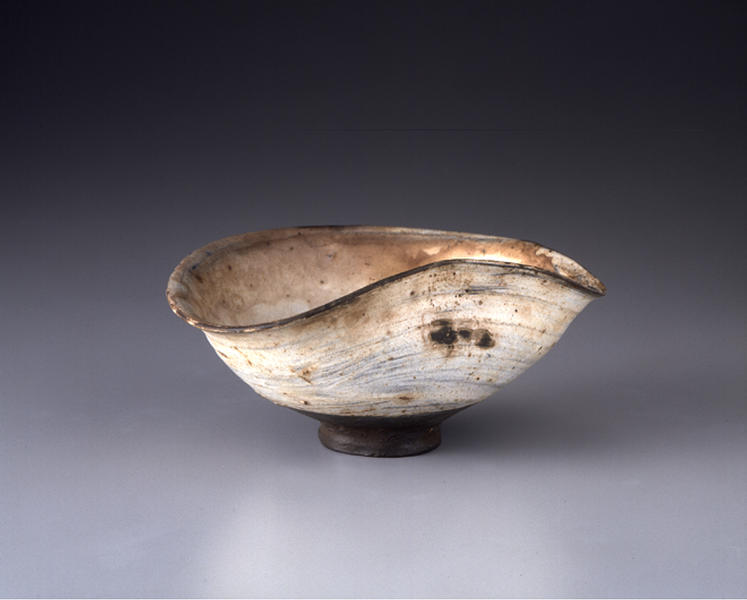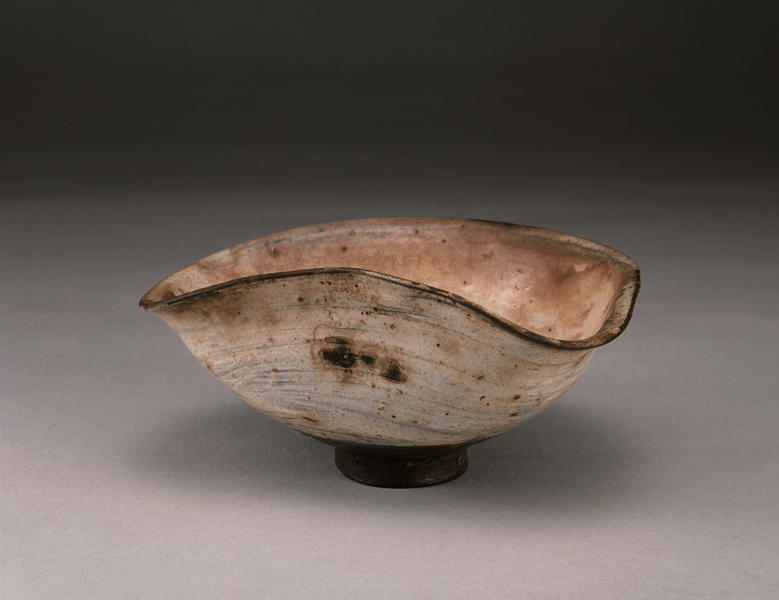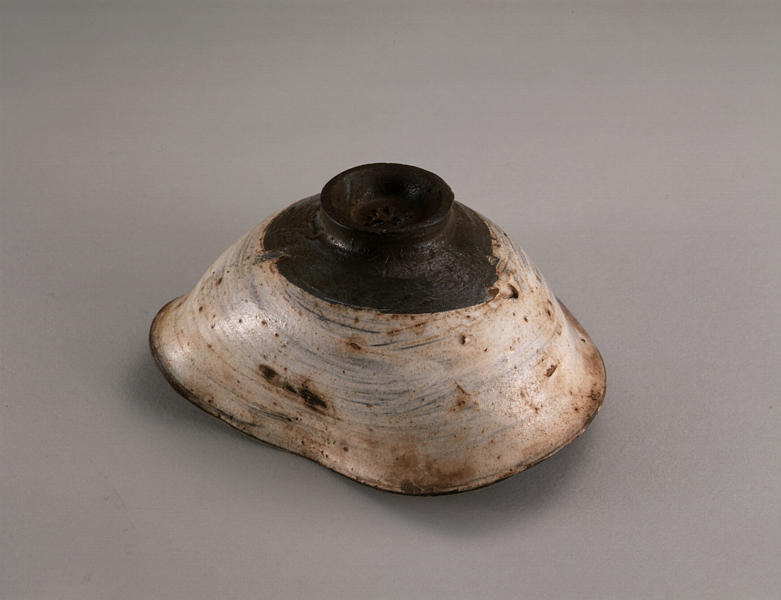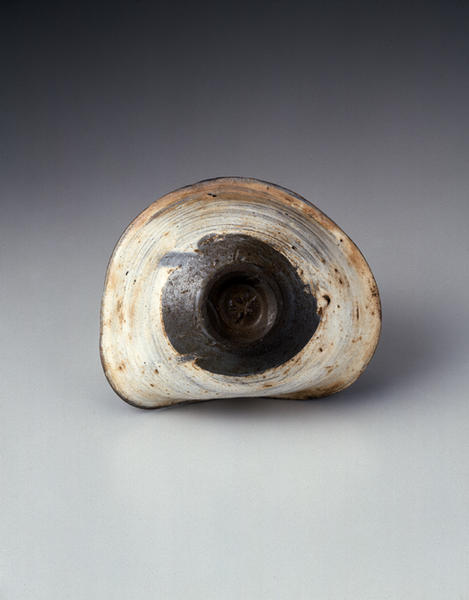刷毛目茶碗 銘 灣月
- 朝鮮王朝時代
- 16c
- 粉青沙器
- H-6.5 D-14
解説(開館1周年記念展)
朝鮮王朝時代に朝鮮で焼かれ,日本に舶載された茶碗を高麗茶碗と呼んでいる。ここでいう高麗とは,高麗時代のことではなく,朝鮮を呼ぶ呼称として「高麗」が用いられたことからきている。室町時代後期,それまで唐物を至上のものとした書院茶にかわって,村田珠光によって唱え始められたわび茶では,高麗茶碗が最上のものとされた。その分類は多岐にわたり,主なものを列記すれば,井戸・雲鶴・三島・熊川・刷毛目・粉引・堅手・玉子手・魚屋(斗々屋とも)・伊羅保・蕎麦・柿の蔕・金海・御所丸・呉器・雨漏・半使・御本などがある。井戸や三島,粉引などは本来雑器であったものを茶の湯の世界にとり入れたものであるが,伊羅保,御本などのように日本からの注文で作られたものも数多い。
黒っぽい胎土に施された白化粧の釉が刷毛でさっと拭いたように見えるところから,本作品のような茶碗を日本では刷毛目と呼ぶ。多くは朝鮮王朝時代の初期に忠清南道公州近くの鶏竜山麓で焼かれたものである。大きさがとても良いこの茶碗は,白泥がしっかり塗ってある内側に対し,外側は刷毛が立って濃淡が生じている。刷毛目が外側と内側で違っているのもこの茶碗の見どころの一つといえる。高台はキュッと締まっている。湾曲した器形はひっつきがあることからわざと歪めた注文品ではなく,窯の中で偶然生じたもののようである。
Catalogue Entry
Tea bowls fired in Korea during the Yi dynasty period and imported to Japan are called 高麗茶碗. Although the word 高麗 is written in Japanese the same way as the word meaning "Koryo period" in Korea, 高麗 in this context does not refer to a specific historical period but simply means "Korea", as it originally meant. In the late Muromachi period, around 16th century, instead of the shoin-style of tea in which Chinese tea bowls had been regarded as supreme, Korean tea bowls rose to the highest ranks of tea bowls in the wabi-style of tea, a style promulgated by Murata Juko. These bowls are divided into various types and the long list includes the following main types: Ido, Unkaku, Mishima, Komogai, Hakeme, Kohiki, Katade, Tamagode, Totoya, Irabo, Soba, Kakinoheta, Kinkai, Goshomaru, Goki, Amamori, Hansu, and Gohon. While Ido, Mishima, and Kohiki types of tea bowls were originally used as ordinary bowls for daily use and then introduced to the world of tea ceremony, many types such as Irabo and Gohon were made by orders from Japan.
The white glaze on blackish clay looks as if it was wiped on quickly with a brush, thus giving rise to the name hakeme (brushed on, brush marks) in Japan for bowls like the present piece. Most of these bowls were fired at the foothills of the Kyeryong mountains near Kongju-gun, Ch'ungch'ong-namdo in the early days of the Yi dynasty. This tea bowl, the size which is, incidentally, impeccable, flaunts a contrast between a solid white inside and the various levels of light and shade produced by the brush's movement on the exterior. The different brushwork between the interior and the exterior is one of the most captivating visual effects of this bowl. The foot looks tight and compact. This somewhat deformed bowl indicates that this tea bowl was not a special order item, deducing from the existence of a mark on the clay caused by it being stuck in the kiln to another piece during firing; the effect was purely accidental.



